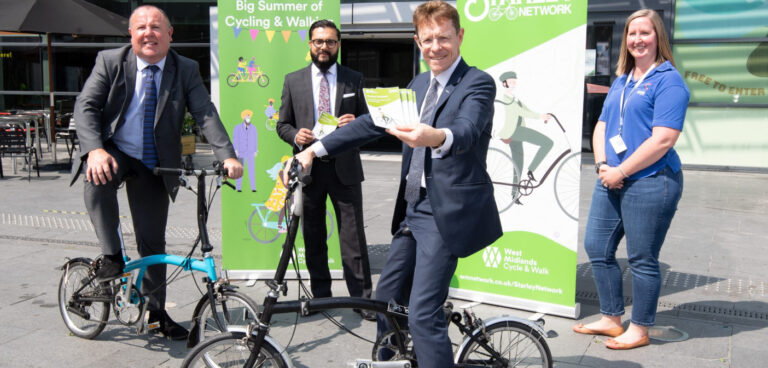Transport for West Midlands (TfWM) has unveiled a new 500-mile cycling network for the West Midlands.
All 493 miles of the routes on the £260m Starley Network will be dedicated for active travel, with the ambition that the routes will either be traffic-free away from the highway, or within roads but physically separated from traffic.
Named in honour of the Starley family of Coventry industrialists who pioneered bicycle manufacturing, the Starley Network pulls together existing routes and towpaths, proposed new cycling infrastructure, and new pop-up lanes funded through the UK government’s Emergency Active Travel Fund.
Local authorities have worked with TfWM, which is part of the West Midlands Combined Authority (WMCA), to link their local cycling plans into a region-wide network. The launch comes after TfWM recently announced its Roll & Stroll campaign, which aims to encourage more people to walk and cycle.
Andy Street, mayor of the West Midlands, said: “We are utterly committed to improving cycling infrastructure across the region, and active travel has a critical role to play in our future transport plans for the West Midlands.
“Cycling has enormous benefits, both for people’s health and the environment. The more people who cycle the more we reduce air pollution, and the more we reduce the strain on our NHS through people getting fitter and healthier.
“That is why we have always been ambitious with our cycling plans, and the fact we set and met a £10 funding per head target is testament to that.”
On top of new routes already planned and funded – including the A45 Coventry Road in Birmingham, and the proposed Binley Road route between Coventry University and University Hospital – the network will feature:
- A new cycle hire scheme to serve the whole WMCA area, with further details to be released in the coming weeks
- New cycle routes to run along the same transport corridors as the planned Sprint Bus routes
- A series of new active travel routes along the Wednesbury to Brierley Hill Metro tram line
- Pop-up cycling lanes
The majority of schemes will primarily be delivered by local authorities.
John Kemp Starley played a key role in the invention of the modern bicycle, producing the Rover Safety Cycle in 1885.
The Rover was a rear-wheel-drive, chain-driven cycle with two similar-sized wheels, making it more stable than the previous high wheeler designs such as the penny farthing.
This invention paved the way and modern bicycles still utilise the same design. In the years that followed, the Starley family firm diversified and Rover eventually became world famous car manufacturer.





